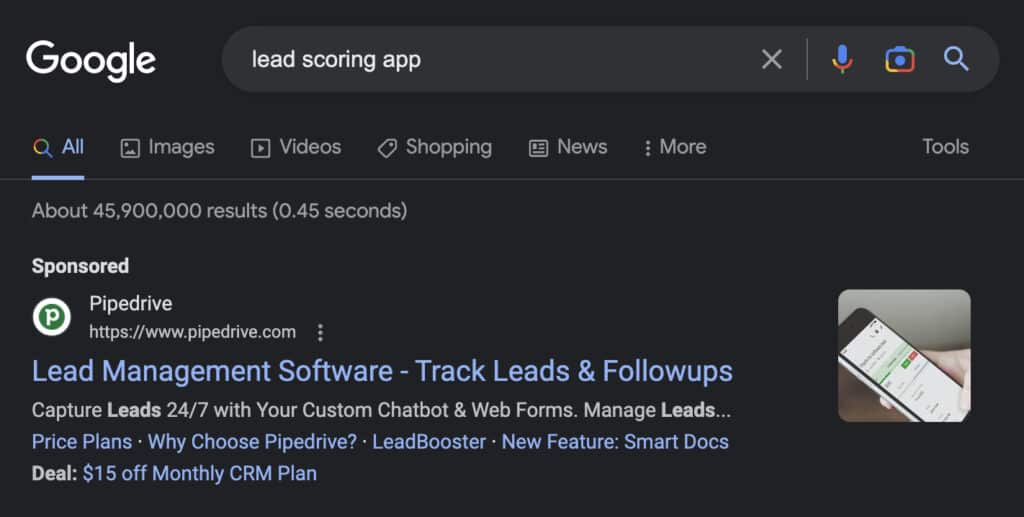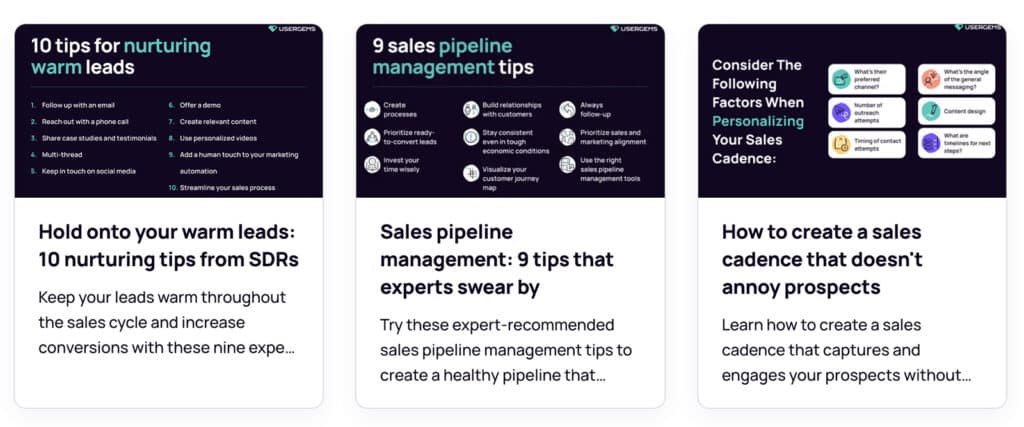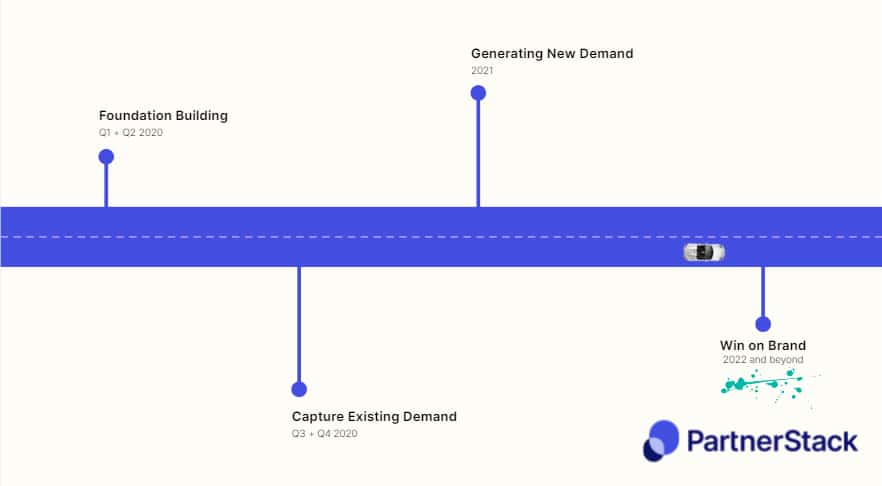The Ideal Marketing Team Structure in 2023

Each year, the average SaaS company spends approximately 10% of its annual recurring revenue (ARR) on marketing.
Ideally, much of this budget goes toward objectives like developing a competitive go-to-market (GTM) strategy, executing lead generation campaigns, and building plenty of pipelines.
But if your marketing team lacks the right roles, skillsets, and alignment, your objectives and key results (OKRs) might be unreachable—which can seriously compromise growth.
So how can you create a top-performing team from the ground up? Or, if you’re approaching the next stage, what’s the right way to restructure?
In this article, we’ll cover the ideal SaaS marketing team structure, explore foundational roles, and look at scaling teams to amplify growth.
4 Essential Roles for SaaS Marketing Teams
Whether your SaaS company has a marketing team of one or several specialized teams, it’s helpful to plan around four primary roles. Think of them as a starting point for structuring your team and assigning ownership of key functions.
Product Marketing
Product marketing knows both the product and the market inside and out. This team handles buyer personas, manages market research, and promotes the product’s unique selling proposition (USP).

Although some overlap is inevitable, they generally use channels like the company website, social media marketing, and email marketing—like the product marketing email from Type above.
The product marketing team often collaborates with the brand team on GTM strategy. They also work on roadmaps with product managers and partner with customer success on messaging.
Growth Marketing
Growth marketing uses a data-driven approach to drive customer acquisition and retention. This team uses experimentation and optimization to maximize lead generation and customer growth.

Growth marketers align closely with demand generation and sales teams. They tend to use channels like paid social and pay-per-click (PPC) to accelerate growth—like the search ad by Pipedrive above.
Brand Marketing
It’s easy to build a team around revenue-focused roles like growth and product marketing. Yet it’s important to have a brand marketing expert on your team, even though it can be challenging to attribute revenue to SaaS branding.
Brand marketing manages many of the most visible elements of any SaaS company, including the logo and the tagline. This team is also responsible for crafting a cohesive brand identity and increasing brand awareness—like in the ClickUp brand video below.

Brand marketers work across channels, collaborating with product marketers on GTM strategy and working with demand generation on improving awareness.
Content Marketing
In some cases, the content might fall under product, growth, or brand marketing. In other cases, all three teams might share content, with each taking responsibility for certain aspects.
Yet for most SaaS companies, content marketing is critical for organic growth. That’s why it’s typically best to consider content as its own role or function.

Content marketers handle everything related to search engine optimization (SEO), including keyword research and content strategy. They also publish lead magnets and blog posts (like the Usergems examples above), often repurposing or promoting content via social media.
Many content marketers also write website copy and sales enablement materials. Content teams collaborate with all other marketing functions, and they also work closely with sales and customer success.
What is the optimal SaaS marketing team structure?
Now you have a rough idea of which marketing roles you need. But how should you structure each team? How do you find the right marketing leader to guide your team, and how many specialists do you need to support each role?
Start With a Marketing Leader
To find a capable leader for your marketing team, it’s typically best to seek out a generalist with a strong vision. That’s typically a chief marketing officer (CMO) or a head of marketing.
Why should you hire a generalist rather than a talented specialist?
Kenneth Burke, VP of Marketing at TextRequest, elaborates: “Generalists need great business minds—they can see how all the little things fit into the big picture, both in the short-term and the long-term. What they’re particularly good at is combining big ideas with managing detailed execution. Ideas without execution mean nothing, and attention to detail without context for larger goals will leave you spinning your wheels.”
Know When to Grow Your Team
So how should you organize your team under the CMO? There’s no one-size-fits-all answer.
Ryan Jones, Marketing Manager at SEOTesting, explains: “Structuring a successful SaaS marketing team depends on a lot of different factors: like the size of the company, the MRR (monthly recurring revenue) you are generating, target market, and the growth stage the company is currently in.”
In other words, plan to start small and scale up as necessary. You can do that by setting OKRs, and then mapping out the structural changes to make and the hires to pursue when you reach those goals.
Joe Kevens, Director of Demand Generation at PartnerStack and Founder of B2B SaaS Reviews, explains how PartnerStack established a foundation before scaling.
“The way that we’ve prioritized hires on our marketing team is by taking a four-step approach:
- Build a foundation
- Capture existing demand
- Generate new demand
- Win on brand
When we were ready to capture more existing demand, we prioritized hiring a paid marketing specialist as our fourth marketing hire to maximize our impact in the short term and prove marketing’s value.
Fast forward two years when we had a dozen marketers on our team capturing and generating new demand, were positioned to win on brand and prioritized hiring a Head of Brand and Content.”
Here’s how PartnerStack’s marketing team growth looked over the course of a two-year period:

Start With a Lean Team
How small should you start exactly? A small, early-stage SaaS company can typically get by with a lean marketing team. To head the department, seek out a CMO who can plan the overall strategy, manage budgets, and oversee the main roles.
Under the CMO, you’ll want a manager or lead for each of the main functions: product, growth, brand, and content. But lean marketing teams generally don’t need elaborate hierarchies.
Vytautas Juskevicus, Chief Marketing Officer at Tidio, explains: “In small-sized teams, it’s hyper-crucial to create a flat team structure instead of a hierarchical one—it just encourages teams to get resourceful and collaborate even more.”
Just because you have a lean team with a flat structure doesn’t mean you have to handle everything in-house. Contracting freelancers is often a smart choice for filling gaps and tackling specific projects as your team starts to aim for more ambitious goals.
Scale Up as Your SaaS Grows
As the company grows, adopting a more complex marketing structure becomes necessary. The CMO role and the core teams might not change, but you’ll need more specialists and team leads to manage marketing functions.
Again, there’s no one approach that works for every company. Use your growth strategy to guide both the hires you make and your method for assigning ownership.
For example, instead of relying on freelancers for overflow, your content marketing manager can build out a content team by hiring:
- In-house content marketers
- Copywriters
- Editors
- Strategists
- SEO experts
At this stage, your growth marketing manager can bring on dedicated team members like:
- Paid social specialists
- PPC experts
Your brand marketing manager may need:
- Field marketing lead
- Public relations specialist
Likewise, your product marketing manager can bring on
- Data analysts
- Partnerships manager
- Affiliate manager
- Product-led content marketer
As your company’s product portfolio expands, you might even consider hiring a product marketing team or manager to oversee each one.
How to Build the Ideal SaaS Marketing Department
How can you build your team and fine-tune your organizational structure successfully? Use the best practices below to make the right hires and create alignment between marketing channels and teams.
Prioritize Key Skillsets for Early Hires
The first marketing hire you make is easily the most consequential. Ideally, you need someone with a clear vision, strategic planning capabilities, and the ability to execute. But what does that really mean?
Jeromy Sonne, CEO of DecibelAds, recommends prioritizing a candidate with “the ability to parse data and focus on end business outcomes (revenue) versus marketing-specific KPIs. To be clear, marketing-specific KPIs are important, but they’re part of a mosaic of things to be looked at with the ultimate goal of driving business outcomes. So a deep understanding of analytics is a must.”
In most cases, T-shaped marketers make strong candidates for marketing leaders. As Ryan Jones of SEOTesting explains, “The person you choose to hire to lead your SaaS marketing efforts needs to have broad experience (i.e., be a T-shaped marketer). This is going to be able to allow them to lead your team effectively, or take the reins effectively if they are coming on as the sole marketer in the team.”
As you grow, you’ll likely hire team leads and specialists in key areas. But if you’re looking at a longer timeline, a generalist can provide more value than you might think.
Kenneth Burke of TextRequest elaborates: “One approach for building teams that work well is for your marketing leader—your first generalist—to master one aspect of your strategy, like a particular channel, or marketing to a niche customer segment. Then hire someone to run the playbook for that one thing while the generalist moves on to the next thing. Repeat.”
Build Out a Team With π-Shaped Marketers
What if you’re planning a really lean marketing department, and you need a marketing team of one? In that case, a π-shaped marketer may be a better fit.
Unlike T-shaped marketers, π-shaped marketers have deep experience in one of the main marketing roles—product, growth, content, or brand. They’re also capable in another of these roles, giving them some flexibility and allowing you to leverage additional expertise even if you need to hire slowly.
For example, product marketing experts with growth marketing capabilities can make strong leaders. Likewise, product marketing experts with content marketing capabilities can be excellent candidates.
As you build out your team, π-shaped marketers can also make great managers and specialists. Since they essentially specialize in one and a half roles, they can collaborate across functions particularly well.
Decide When to Hire vs. When to Contract
As your SaaS company grows, you’ll need to decide between hiring in-house employees and contracting work out to freelancers. In most cases, you’ll want to keep high-level roles in-house.
Jeromy Sonne of DecibelAds recommends keeping strategy in-house and hiring specialists only when absolutely necessary. Jeromy says: “I think generally people often hire too quickly for tactical roles, and you really need to be ‘feeling the pain’ of not having that person be solely focused on your business. Headcount as a metric unto itself is a negative signal and if you’re a VC-backed startup it’s a good way of increasing burn arbitrarily without much extra benefit.”
When considering bringing on freelancers, Alvin Wei, co-founder and CMO of SEOAnt, recommends reviewing the project scope and analyzing the talent gap. In some cases, freelancers provide exceptional value.
Alvin explains, “Working with contract freelancers gives us a unique opportunity to tap into an expert talent pool at a lower cost than it would take to hire them or train a candidate in our team. Furthermore, contract freelancers also come in handy for routine tasks such as content creation, which frees our in-house team to focus on other high-value tasks.”
Create Alignment Between Functions
No matter which marketing role you hire or build out first, you need strong alignment and clear agreements between functions. These elements should extend far beyond the marketing team.
For example, you need to know who owns website development and technical SEO. Is it engineering or marketing? Where and how do they collaborate?
In addition, product and marketing have to be aligned on the product roadmap. That way you can plan marketing launches, produce creative assets, and guide naming and branding.
Jeromy Sonne of DecibelAds recommends aligning marketing with sales and customer success. “The best context marketing will have for both funnel performance as well as the anecdotal learning from things CS and sales are able to pass to craft better copy / positioning is invaluable. No other way to get that than actually speaking to customers and other team members who talk with customers regularly.”
It’s also crucial to come to a data-sharing agreement. Marketing can build compelling data-driven content—but they need SaaS product data to do so.
Final Thoughts on SaaS Marketing Team Structure
Ultimately, your growth strategy and marketing operations should guide how you structure your SaaS marketing team. With the guidelines above, you can start building a successful team from the ground up and have a clear strategy to adjust and scale as the company grows.
But as you scale, analyze the real revenue impact of your marketing efforts. Often HubSpot, Google Analytics, and other tools owned by marketing can’t tell the whole story—making cross-team alignment and data sharing even more important.

